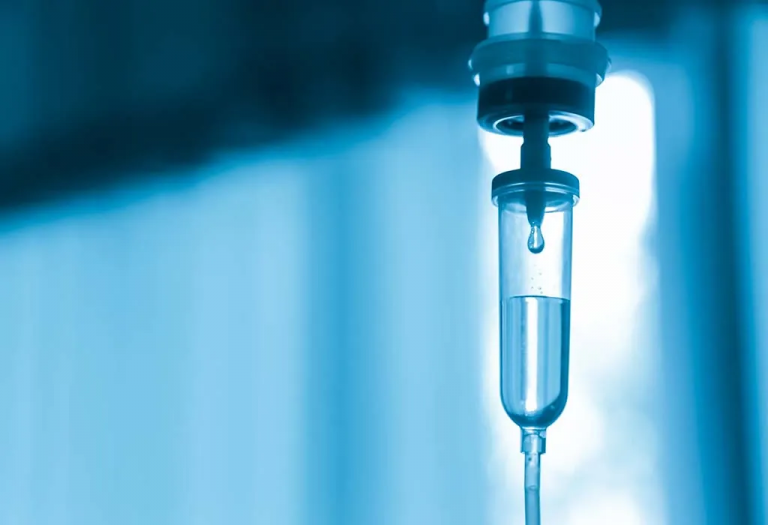TOTAL PARENTERAL NUTRITION

History
Developed in the 1960s by Dr. Stanley Dudrick, who as a surgical resident in the University of Pennsylvania, working in the basic science laboratory of Dr. Jonathan Rhoads.
Total Parenteral Nutrition
Solutions for total parenteral nutrition may be customized to individual patient requirements, or standardized solutions may be used. The use of standardized parenteral nutrition solutions is cost effective and may provide better control of serum electrolytes. Ideally each patient is assessed individually before commencing on parenteral nutrition, and a team consisting of specialized doctors, nurses, clinical pharmacists and registered dietitians evaluate the patient’s individual data and decide what PN formula to use and at what infusion rate.
For energy only, intravenous sugar solutions with dextrose or glucose are generally used. This is not considered to be parenteral nutrition as it does not prevent malnutrition when used on its own. Standardized solutions may also differ between developers. Following are some examples of what compositions they may have. The solution for normal patients may be given both centrally and peripherally.
|
Examples of total parenterals nutrition solutions |
|||
|
Substance |
Normal patient |
High stress |
Fluid-restricted |
|
Amino acids |
85 g |
128 g |
75 g |
|
Dextrose |
250 g |
350 g |
250 g |
|
Lipids |
100 g |
100 g |
50 g |
|
Na+ |
150 mEq |
155 mEq |
80 mEq |
|
K+ |
80 mEq |
80 mEq |
40 mEq |
|
Ca2+ |
360 mg |
360 mg |
180 mg |
|
Mg2+ |
240 mg |
240 mg |
120 mg |
|
Acetate |
72 mEq |
226 mEq |
134 mEq |
|
Cl− |
143 mEq |
145 mEq |
70 mEq |
|
P |
310 mg |
465 mg |
233 mg |
|
MVI-12 |
10 mL |
10 mL |
10 mL |
|
Trace elements |
5 mL |
5 mL |
5 mL |
Components
Prepared solutions
Prepared solutions generally consist of water and electrolytes; glucose, amino acids, and lipids; essential vitamins, minerals and trace elements are added or given separately. Previously lipid emulsions were given separately but it is becoming more common for a “three-in-one” solution of glucose, proteins, and lipids to be administered.
Added components
Individual nutrient components may be added to more precisely adjust the body contents of it. That individual nutrient may, if possible, be infused individually, or it may be injected into a bag of nutrient solution or intravenous fluids (volume expander solution) that is given to the patient.
Administration of individual components may be more hazardous than administration of pre-mixed solutions such as those used in total parenteral nutrition, because the latter are generally already balanced in regard to e.g. osmolarity and ability to infuse peripherally. Incorrect IV administration of concentrated potassium can be lethal, but this is not a danger if the potassium is mixed in TPN solution and diluted.
Vitamins may be added to a bulk premixed nutrient immediately before administration, since the additional vitamins can promote spoilage of stored product. Vitamins can be added in two doses, one fat-soluble, the other water-soluble. There are also single-dose preparations with both fat- and water-soluble vitamins.
Minerals and trace elements for parenteral nutrition are available in prepared mixtures.
These additional components in parenteral nutritions, however were subject to stability checks, since they greatly affect the stability of lipid emulsions that serve as the base for these formulations. Studies have shown differences in physical and chemical stabilities of these total parenteral nutrition solutions, which greatly influences pharmaceutical manufacturing of these admixtures.
Emulsifier
Only a limited number of emulsifiers are commonly regarded as safe to use for parenteral administration, of which the most important is lecithin. Lecithin can be biodegraded and metabolized, since it is an integral part of biological membranes, making it virtually non-toxic. Other emulsifiers can only be excreted via the kidneys, creating a toxic load. The emulsifier of choice for most fat emulsions used for parenteral nutrition is a highly purified egg lecithin, due to its low toxicity and complete integration with cell membranes.
Use of egg-derived emulsifiers is not recommended for people with an egg allergy due to the risk of reaction. In situations where there is no suitable emulsifying agent for a person at risk of developing essential fatty acid deficiency, cooking oils may be spread upon large portions of available skin for supplementation by transdermal absorption.
Another type of fat emulsion Omegaven is being used experimentally within the US primarily in the pediatric population. It is made of fish oil instead of the soybean oil based formulas more widely in use. Research has shown use of Omegaven may reverse and prevent liver disease and cholestasis.
https://en.wikipedia.org/wiki/Intravenous_therapy
